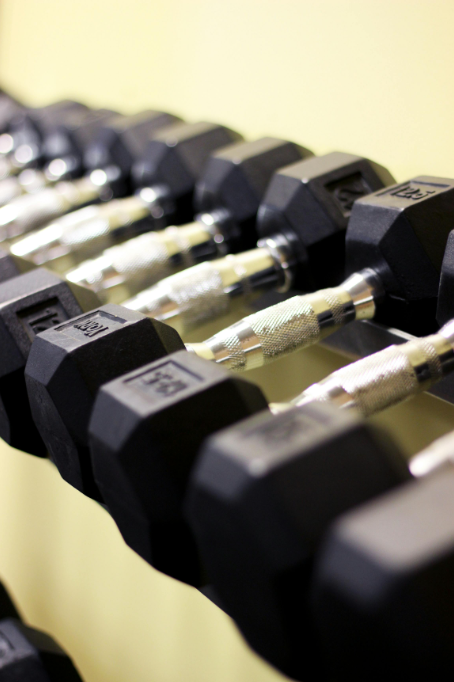
If you’re someone who works out and lifts weights, you’ve likely heard of the phrase “mind to muscle connection”. But what is it exactly?
Although you might not be entirely familiar with the term, mind to muscle connection is a common weightlifting skill used among professionally lifters.
It’s a way of training that has helped all kinds of people skyrocket their muscle gains. Myself included.
If you haven’t considered implementing this strategy into your workouts, now’s the time to do it. If you want to start making more gains, that is.
Here, I’m going to share everything I know about mind to muscle connection and how to incorporate it into your weightlifting routine to skyrocket your muscle gains.
What is mind to muscle connection
Mind to muscle connection is a training skill that requires you create awareness between your mind and your muscle. This awareness is of the way your muscles feel during an entire movement.
The goal is to be able to create a connection between your mind and your muscle during an exercise. Hence why it’s called a “mind to muscle” connection.
This way of training requires training both your mind and your muscles to work in unison.
It takes a lot of practice and can seem difficult to master, but once you master it it’s entirely worth the effort.
Developing this skill is essential to help promote and stimulate muscle growth. And, if you implement it correctly, leads to a tremendous increase in progress.
How long it takes to develop this connection
For me personally, it took me about a year to develop a mind to muscle connection.
When I first started working out, I usually felt exercises in the whole region of whatever I was training.
For example, if I was doing hip thrusts, I’d feel them equally throughout my entire legs, rather than just primarily in my glutes.
I didn’t have the ability to target and isolate one muscle on any exercise, besides during very specific isolation exercises. You might now be realizing that this is a problem you’re having too.
It took me about a year to develop this connection. And since then, I’m able to feel exercises primarily in the muscle they’re supposed to be training. Allowing me to much better target specific muscles.
For example, comparing hip thrusts now to how I used to perform the exercise, I’m able to feel them mainly only in my glutes. Making hip thrusts a much better exercise to isolate and target my glutes.
It took me so long to develop this connection for a couple of different reasons.
One, because I didn’t have enough foundational muscle on my body. I did have muscle, but muscle from playing sports, not from lifting weights.
And two, because I didn’t even know what mind to muscle connection was until much later in my journey. It wasn’t something I was focusing on from the start.
Now, don’t get discouraged from how long it took me.
If you’re someone who’s emphasizing a mind to muscle connection much earlier in your journey (even right from the start), you will develop it much sooner than I did.
How do you know if you’re doing it right

When you start implementing this mind to muscle connection strategy, it can be hard to tell if what your doing is right.
Someone comes along and tells you to feel the connection between your mind and your muscles, but what does that even mean exactly? Don’t you have a connection between the two if you’re working out already?
The answer is no you don’t, not exactly. Of course, your mind knows your muscle is performing the exercise, but it doesn’t necessarily have a connection with the specific muscle you’re targeting.
To know you’re doing this right, pay attention to the way your muscles feel throughout the movement.
Once you start feeling your muscles, you’ll gain more familiarity and confidence in the way your muscles move.
When you start having a mind to muscle connection, it’s all about feeling the muscle contractions while you workout.
Over time, you’ll start to get used to the feeling of your muscles squeezing during an exercise and that’s how you’ll know it’s right.
It almost feels like you’re tightening and flexing your muscles during a set. You can feel the tension on the one specific muscle group you’re training.
Eventually, you’ll be able to differentiate between the stretches and the contractions, feeling the tightening and flexing of your muscles.
Benefits of mind to muscle connection
Increased muscle growth
The more you can feel the exercise in the specific muscle you’re targeting, the more your muscle is going to grow.
This is because you can use the exercise how it’s intended to be used and achieve maximum muscle stimulation.
It becomes easier to target the specific muscle and make the most amount of tiny tears in this muscle. Much like I was saying earlier with my hip thrusts.
Improved workouts
Because you can feel the muscles much better, you’ll have a much better pump after your workouts.
You’re muscles will feel much fuller and more fatigued once you finish working out. Because of increased blood flow and increased tension on the muscles.
Additionally, you’ll feel much more sore after your workouts after the increased stimulation of muscle growth.
You can start creating your own exercises
When you start feeling a mind to muscle connection, you can create your own movements that work your muscles how you want them to.
For example, I was in need of another glute workout and loved doing step ups, but didn’t have a smith machine to do it.
So, using this mind to muscle connection, I was able to make my own form of step ups by performing a front foot elevated lunge.
Now that I’m able to feel these exercises so well in my muscles, I’m able to customize my own exercises and make new ones to target my muscles the way I want them to be targeted.
When you can actually feel an exercise in your muscle and feel how your muscle interacts with it, it makes it much easier to design a routine that works for you.

Strategies to develop a mind to muscle connection
Once you start focusing on mind to muscle connection, you’ll be sure to see more progress from your workouts.
That’s why it’s so important to learn how to develop this connection.
Here are the best, tried and true ways to develop a mind to muscle connection.
1. Focus on your form
As someone who lifts weights, having good form is extremely important in any element. Having proper form helps prevent injuries and allows you to get the most out of your workout.
When you focus on having proper form, this gives you the greatest chance to engage your muscles properly.
Good form allows your muscle to be moving in the correct path and everything to be in alignment.
This is essential to perform an exercise properly and feel all the proper stretches and contractions in your muscles.
All of this is essential when feeling for that mind to muscle connection.
2. Slow down your movements
If you’re flying through your workouts, it’s highly unlikely you’ll be able to concentrate much on the sensations in your muscles.
Performing every exercise fast and out of control will surely prevent you from being able to establish a good mind to muscle connection.
Because of this, it’s essential that you slow down your movements. Slow down every part of the exercise you’re doing and slow down every rep you do.
Slowing down will allow you to truly engage your muscles. As well as engage them for a longer period of time.
3. Focus on time under tension
Again, focusing on time under tension is much like slowing down the movement. However, you’re primarily focusing on slowing down the exercise during the eccentric portion of the movement.
The eccentric portion is when your muscle is in the lengthened position. This is when you get the best stretch during the rep. The concentric is the opposite of the eccentric.
To focus on time under tension, your rep should be slow during the eccentric, followed by generating power into the concentric.
Think of it as slowly performing the eccentric then exploding into the concentric.
Increasing your time under tension again will help your mind feel the movement much better.
The goal here is to get your mind familiar with the feelings of your muscles when you properly perform an exercise. The best way to do this is to slow down the movement, giving your mind as much time to recognize how the movement feels.
4. Flex and engage the muscle during the eccentric
Another strategy to help develop that mind to muscle connection is to actually flex your muscles during an exercise.
It’s best to tighten up your muscles during the eccentric movement of your exercise. This flexing and tightening is one of the best ways to start engaging your desired muscles during a rep.
Think about it, when you focus on flexing your muscles, you’re really able to concentrate on feeling the muscle you’re flexing.
The same goes for when you flex your muscles during an exercise. Flexing during a rep allows you to feel that muscle tighten up and it becomes one of the only muscles you feel during that exercise.
5. Touch the muscle your training
Another strategy to help develop a mind to muscle connection is to actually touch the muscle you’re training.
Touch the muscle with one or both of your free hands during the entire rep.
This will allow yourself to feel your muscle during the entire movement and direct your mind to the exact location where it should be focusing.
Feeling the sensation of your hand on your muscle helps your mind recognize and concentrate on the contractions.
Takeaways
Mind to muscle connection is an extremely important aspect of the gym. Especially if you’re looking to make major progress.
Developing this connection is essential to get the most benefits from your workouts and target your muscles like never before.
Although this is a skill that takes time to develop, by slowing down your movements and allowing your mind to feel all the contractions of your muscles, it’s certainly something you can master.
More posts on women’s weightlifting:
How to train to failure in the gym